7 Portable Tools to Make a Full Image Backup of USB Drives
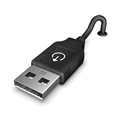
5. USB Flash Tools
Although USB Flash Tools is from 2009 and its website is long gone, this is a handy little program to have around. Besides being able to back up a USB drive to an image file and restore it, USB Flash Tools can also secure erase the whole drive or free space, and verify a USB drive or memory card to check for a fake capacity.
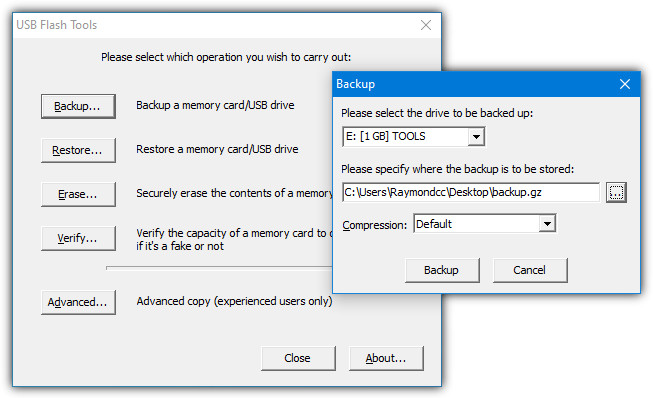
Click the Backup button, choose the device from the drop down, and specify a name for the backup file. You can save as an uncompressed (IMG) or a compressed (GZ) file. A drop down option offers different levels of compression from fastest to max and the compression ratio and time taken will vary. There is also an Advanced copy window with extra functions for start offset, copy length, and buffer size.
Sometimes we encountered a “Can’t open source” error when clicking the Backup button with compression enabled. A solution to this problem is trying to make sure other programs that have access to the drive are closed. Simply closing any open Explorer windows fixed the error for us.
6. RMPrepUSB
If you want a more advanced tool with several other functions besides being able to backup your USB device, then RMPrepUSB could be a useful tool. In addition to creating a full image backup of a drive, it can also install bootloaders and various operating systems onto USB, test a device’s write speeds, wipe a drive and run checks to see if a USB flash drive is the correct capacity and not fake.
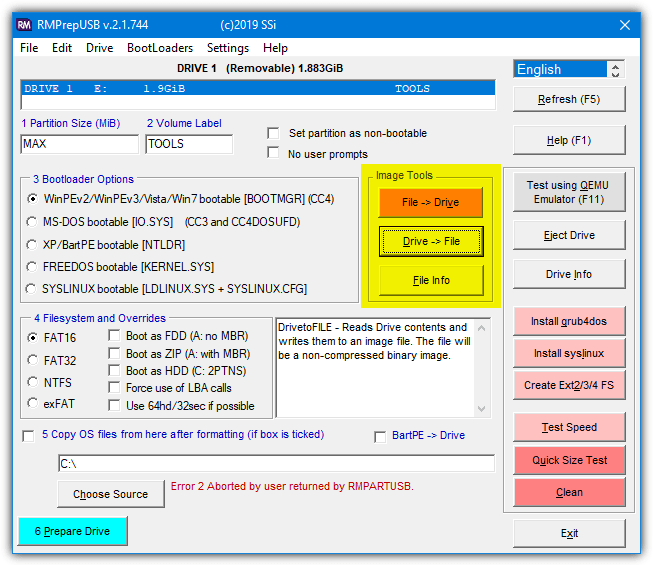
The only options you need are the Image Tools in the middle of the window to create and restore USB image files. “Drive -> File” will make the backup file and there are some advanced options available after selecting the new file’s name. These are choosing the start sector, partition or size amount to skip, and the amount of data, partition or MBR to copy. Press enter each time to accept the defaults of everything being copied.
Writing an image file back to a drive accepts a number of file formats although not all of them will be compatible with writing to USB flash drive or memory card etc. They include standard BIN, IMG and IMZ files, and also Zip and 7-Zip archives. Interestingly, it also supports virtual hard disk files such as VDI and VHD although success writing them to USB will be limited (Rufus VHD images should work though).
7. Roadkil’s DiskImage
DiskImage is a tiny portable executable of around 70KB (a setup installer is available) and it works on anything from Windows 98 to Windows 10. This is a very simple and easy to use tool but be aware that it lists all physical drives and volumes, not just the USB storage devices. DiskImage also starts on the Write Image tab so to read a USB device you need to click on the Store Image tab.
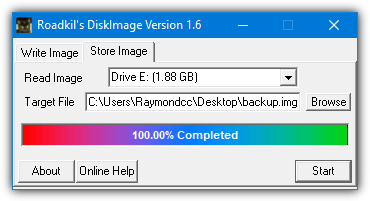
Usage is easy and you simply choose the drive, browse where to put the new file, give it a name, then click Start. The whole device will be backed up uncompressed to the IMG file format and the file can then be viewed or files extracted by tools such as 7-Zip or UltraISO etc. Writing the image file back out is simply a case of selecting the drive to write to and locating the IMG file from the Write Image tab.
8. Win32 Disk Imager
Win32 Disk Imager is a simple, free tool designed to create and restore disk images for USB drives and SD cards. It’s portable, so you don’t need to install it, and it’s a great choice for creating backups or making a bootable USB drive.
The process is straightforward: select the drive, pick the file for the image, and press the “Read” button to create an image or “Write” to restore it. The tool supports IMG files, which are the most common disk image format. This makes it easy to create a backup or restore a device with just a few clicks.
One key limitation is that the program only supports IMG files, so if you need to work with other image formats, you’ll need a different tool. Overall, Win32 Disk Imager is an excellent, no-frills option for creating disk backups of your USB devices.
Reducing the Size of Compressed Backups
When you take a full image backup, it will also copy previously deleted data on the drive. You might only use 20% of a 16GB drive but the drive has previously been 90% full. When that happens, there is 90% of data to compress and not just 20%. This is a reason why a compressed backup might be close in size to an uncompressed backup (it also depends on how compressible the data is).
A way to potentially compress the backup a lot more is to wipe the free space on the drive so only the data currently in use will need to be compressed. A program called SDelete can do that with the help of our own small frontend tool. SDelete is a command line only tool so the frontend makes it easier to use.
1. Download SDelete from Sysinternals and extract the Zip file. Also download our Raymonodcc Free Space Wiper Frontend and place both in the same folder.
2. Launch the frontend tool, choose the USB device from the drop down list, select the “Zero free space” option, then press the run button.
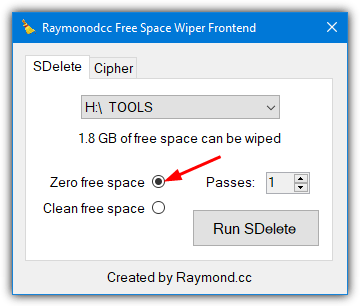
SDelete will zero the free space on the drive while leaving current data intact. As zeros compress to virtually nothing, you can back up with compression or without compression and use an archiver later on. The end product should be a smaller and better compressed file. Wiping free space with random data won’t help compress the image so you must use zeros or another consistent character such as ones.
You can also use USB Flash Tools above (program #5) for this with its Erase > “Overwrite free space” option. Make sure to use zeros or ones as the overwrite method.
Note: Although doing this every now and then isn’t a problem, constantly zeroing the device’s free space could help decrease its lifespan and is not recommended. It’s not a problem for mechanical USB hard drives but applies to flash memory based devices like USB sticks, SD cards, externals SSDs, MP3 players, mobile phones, and etc.





User forum
34 messages